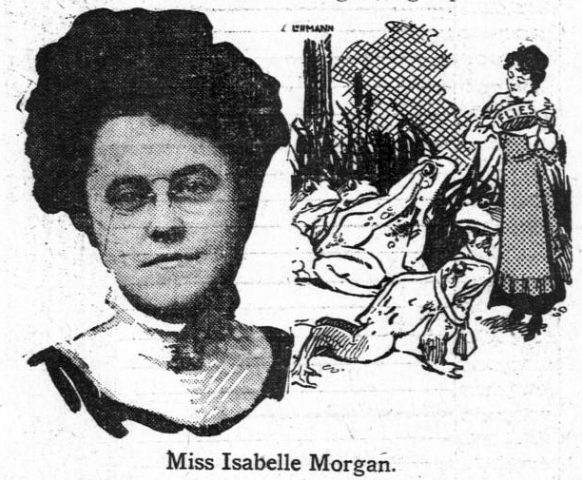
Frog farming is just something I never thought of or heard of before. Then again, I used to live in Pennsylvania and I do not know anyone who eats frogs. The article below is about a woman who left life as a stenographer to grow frogs on her father’s farm.

A Southern Girl Runs a Frog Farm and Makes a Good Living
Miss Isabelle Morgan is a pioneer in the frog farming line. Before taking up the occupation of frog farming she was a stenographer in Baltimore. The strict business training then gained she considers the basis of her success.
When the strain of office hours told on Miss Morgan’s health, her physicians ordered her into the open air and she returned to her home on a farm.
Maryland is one of the six states that lead in supplying the country with frogs, and the marshy lowlands on Miss Morgan’s father’s property offered suitable environments for the work.
The bullfrog is the variety which is most profitable to stock a farm, as their large size makes them especially valuable as a table delicacy, and their greedy habits renders them easy to capture.
When sold for food, full grown bullfrogs bring from one to four dollars per dozen. Especially large, fine specimens are shipped by Miss Morgan for use in biological laboratories. These often bring as big a price as three dollars each.
The frog reserve of this Maryland girl consists of a series of marshy ponds, each enclosed by fine wire fencing. This prevents the escape of the frogs and insures their safety against snakes and turtles.
From May to July the ponds are closely watched for eggs, which are removed to another enclosure. Here the eggs hatch and the giant bullfrog tadpoles slowly develop through a period extending from one to three seasons.
These tadpoles often reach a length of six or seen inches. They are carefully guarded, as not only the bulk of the full grown frog, but also the number of years necessary for this growth depends largely upon the size attained by the tadpole before its transformation.
The young frog, when it develops, is removed to a third pond where he can neither molest the tadpoles or be harmed by his full grown relatives. Here he spends his time buried in the mud and moss except at night, when he comes out to feed upon the insects, dead fish, larvae and other delicacies that make up the young frog’s menu.
The frogs Miss Morgan sells for eating purposes have the legs skinned and shipped in ice water. The choice specimens destined for laboratory use are first selected.
It requires some time to establish a well organized frog reserve.
Source: (1911, November 13). A Southern Girl Runs a Frog Farm and Makes a Good Living. The Day Book, pgs. 30-31.

